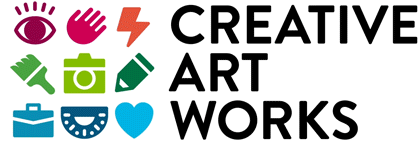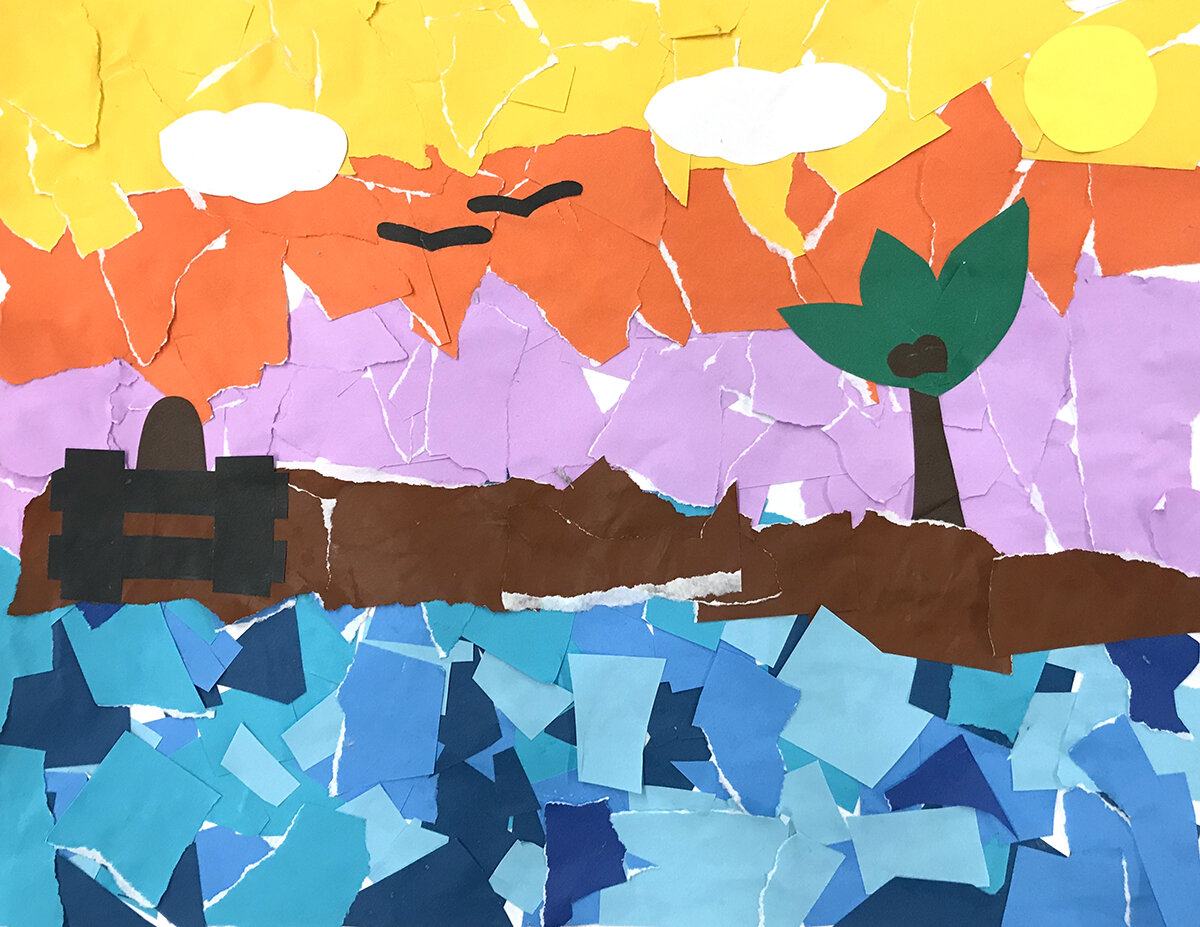Art and Culture Meet at Crossroads of the World
Art & Culture Meet at the Crossroads of the World
New York City is recognized as a crossroads of the world and, according to demographic research conducted by Axios in 2019, Queens is the most ethnically diverse urban area on the planet. It's also the most linguistically diverse place, with at least 138 languages spoken throughout the borough. While this multicultural mixture is integral to the fabric of our great metropolis, many students do not see themselves reflected in their regular school curriculum. That’s why the City Council developed the Cultural Immigrant Initiative to support cultural organizations that provide programming focused on the cultural history or traditions of immigrant communities in New York City. Over the past two years, Creative Art Works has been offering art-making programs supported by this initiative at a number of schools in Manhattan and Queens.
Each lesson plan starts by introducing students to a work of art that represents a particular culture or place of origin, such as pre-Colombian Mochi figure vessels from Peru or the vivid portraits of Dominican artist Candido Bido. These examples serve not only as inspiration for student artwork, but also as a starting point for class discussions.
“During ‘turn and talk,’ sessions, it’s natural for students to share about their cultures. Sometimes it’s just a little thing, like the word for a color in their language. Other times, they might talk about the ways customs and traditions are different in their country, or maybe not too different. They learn a lot from each other.”
Portraits inspired by Dominican artist Candido Bido
A Signature worthy of a Sultan
Many students at PS 88 hail from Spanish-speaking countries, including Mexico, Ecuador, Argentina, and Colombia. Many others come from countries of the Islamic world, including Saudi Arabia, Yemen, Egypt, and Morocco. At first glance, these two groups might seem quite disparate; however, Islam played a major role in the development of Spanish culture during the Moorish occupation of the Iberian Peninsula (711 — 1492). Lance Paladino, CAW’s Program Manager — Teaching and Learning, devised a lesson plan based around this cross-cultural connection. Students created their own decorative signatures inspired by a tughra, a highly stylized signature that served as a seal of authenticity on official documents from the Sultan. The example shown here belonged to Sultan Suleiman the Magnificent. (You can see it for yourself at the Metropolitan Museum of Art.)
This project, as with all lesson plans in this program, was divided into three sections that built on each other. First, students were given an opportunity to explore the materials and create freely. Next, they learned techniques and were introduced to ideas that they could incorporate in their finished artwork. In this case, they experimented with making personal symbols using gold and silver markers. During a period of reflection led by CAW Teaching Artist Fabio Puentes, students were guided to look closely at the the complex decorations on the tughra. The intricate decorations of frilly leaves, carnations and palmattes, along with the lavish use of gold leaf, not only made the tughra difficult to forge, they are also a bold statement about the wealth and power of the Sultan. Students were encouraged to create their own patterns and motifs that represent their unique personality. All of this was incorporated into the final stage when students created their own “fancy” signatures.
A symbol of freedom
Some 90 miles south of Quito, Ecuador, there is a small farming community called Tigua. Tigua’s population is so small that it doesn't even count as a proper village, yet the artists who live there are known around the world for bright paintings of Andean life. Last semester, middle school students at IS 93 made landscape collages inspired by the work of renowned folks artist Julio Toquiza. Many students made an immediate connection to this project.
“We began our class by looking at images of tigua paintings. During the “turn and talk,” one table of students shared that they could tell the art was from Ecuador, because there were condors in several of the paintings, and condors — a symbol of freedom — appear on the Ecuadorian flag. This led to a discussion about how we could create symbols to represent our own individual and family identities. ”
Painting by Tiguan folk artist Julio Toaquiza
Other projects in this program draw inspiration from around the world, including ceramic animal figures inspired by pre-Colombian Andean animal vessels; narrative paintings inspired by Chicana artist Carmen Lomas Garza; and contemporary artists, such as mixed-media collage inspired by the stained glass work of Mexican artist and fashion designer Raul de Nieves. Students explore a variety of materials and techniques, including drawing, painting, collage, sculpture, collographs (printing using found objects), and mixed media assemblages.
These Creative Art Works programs are supported, in part, by public funds from the New York City Department of Cultural Affairs in partnership with the City Council. Funding from the Cultural Immigrant Initiative was allocated to CAW programs in Queens by NYC Council Member Robert Holden, and to CAW programs in Manhattan by NYC Council Member Ydanis Rodríguez.
















